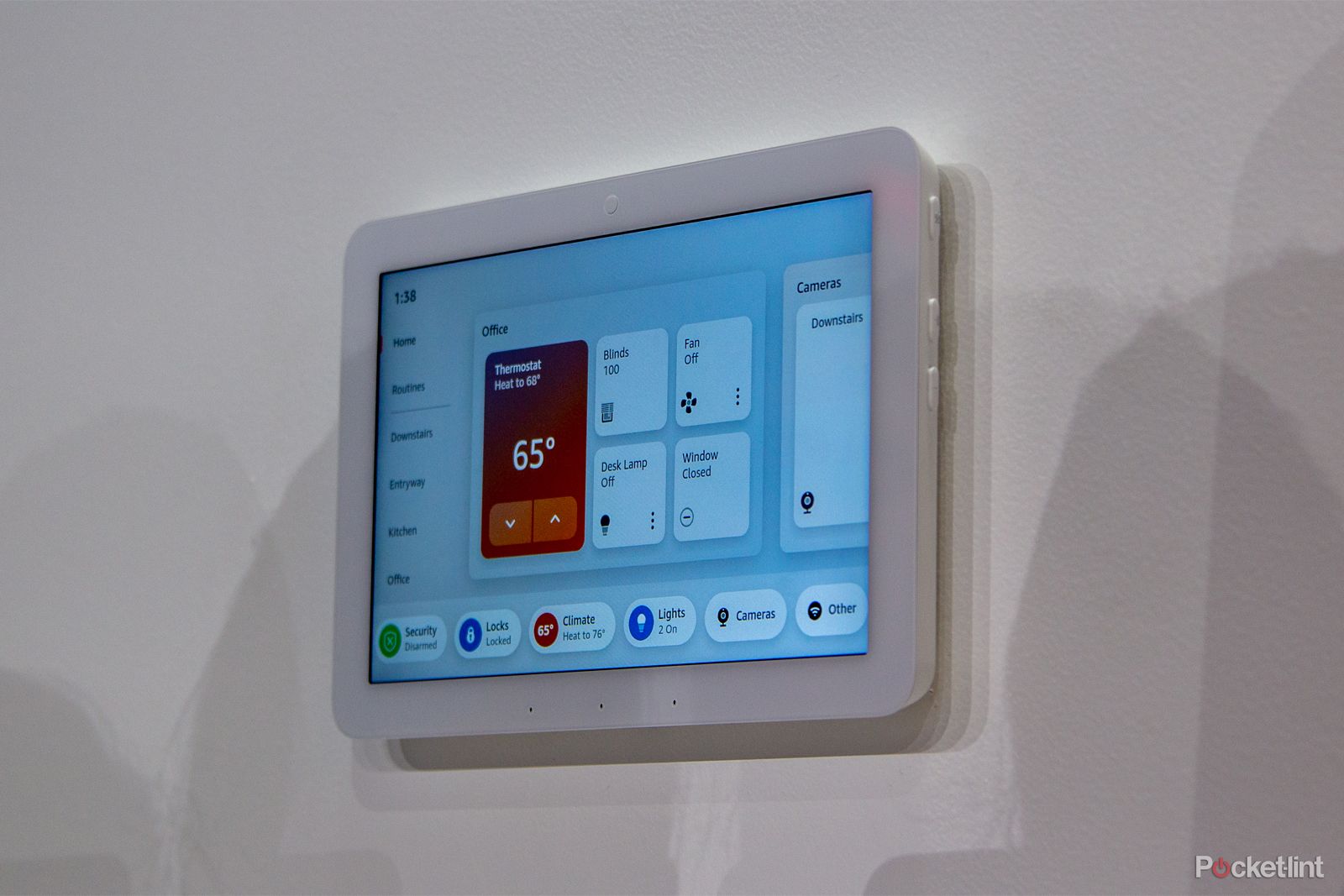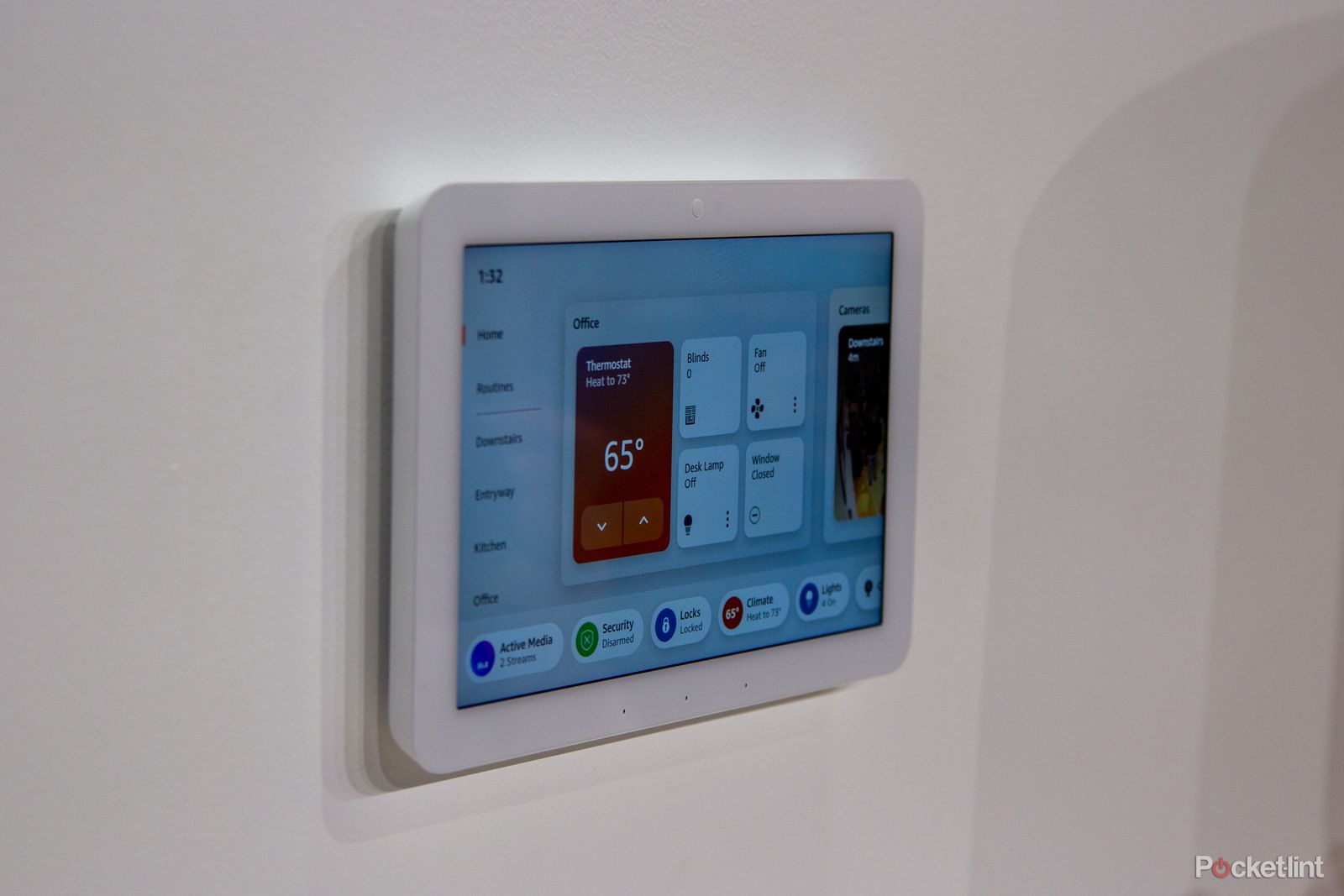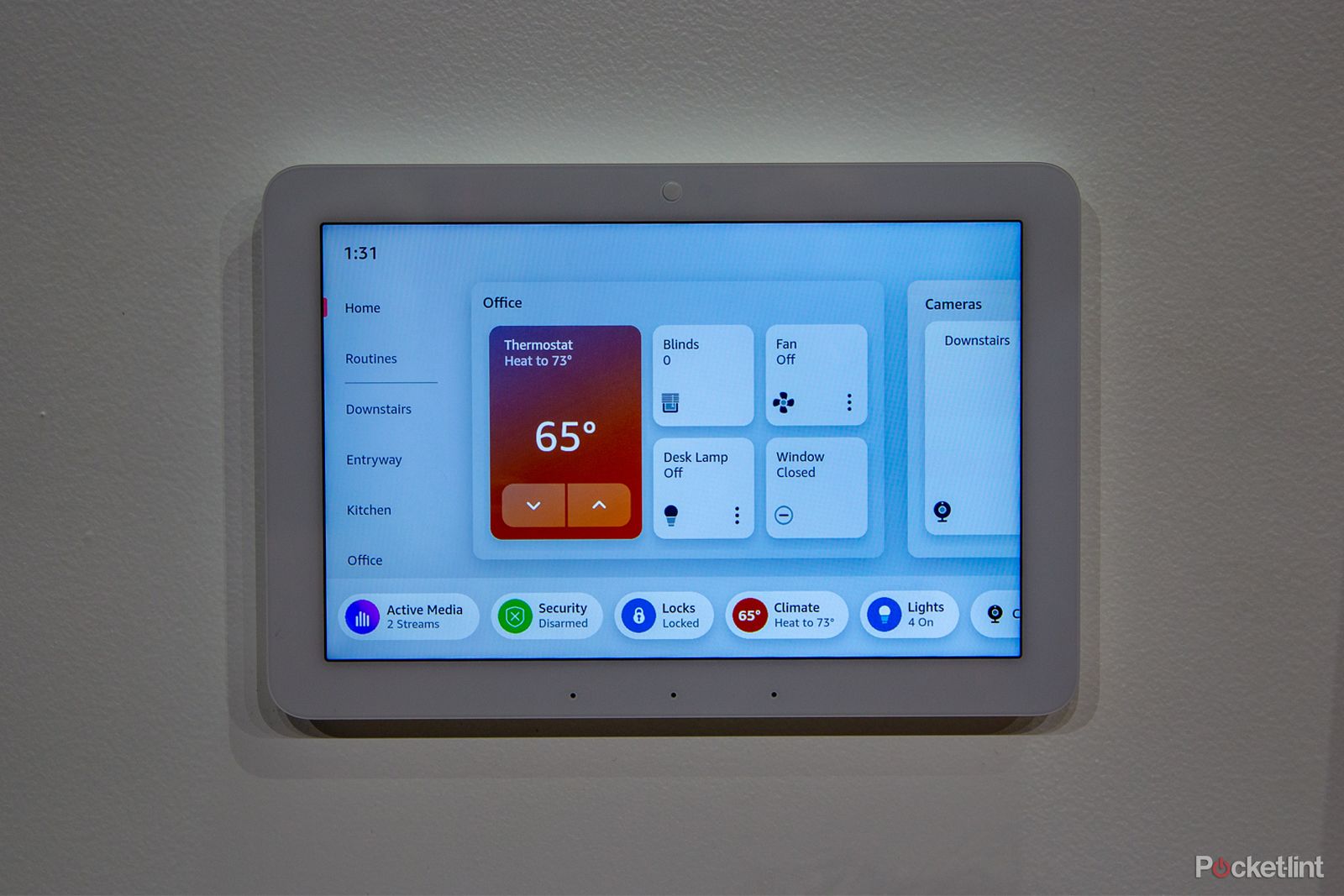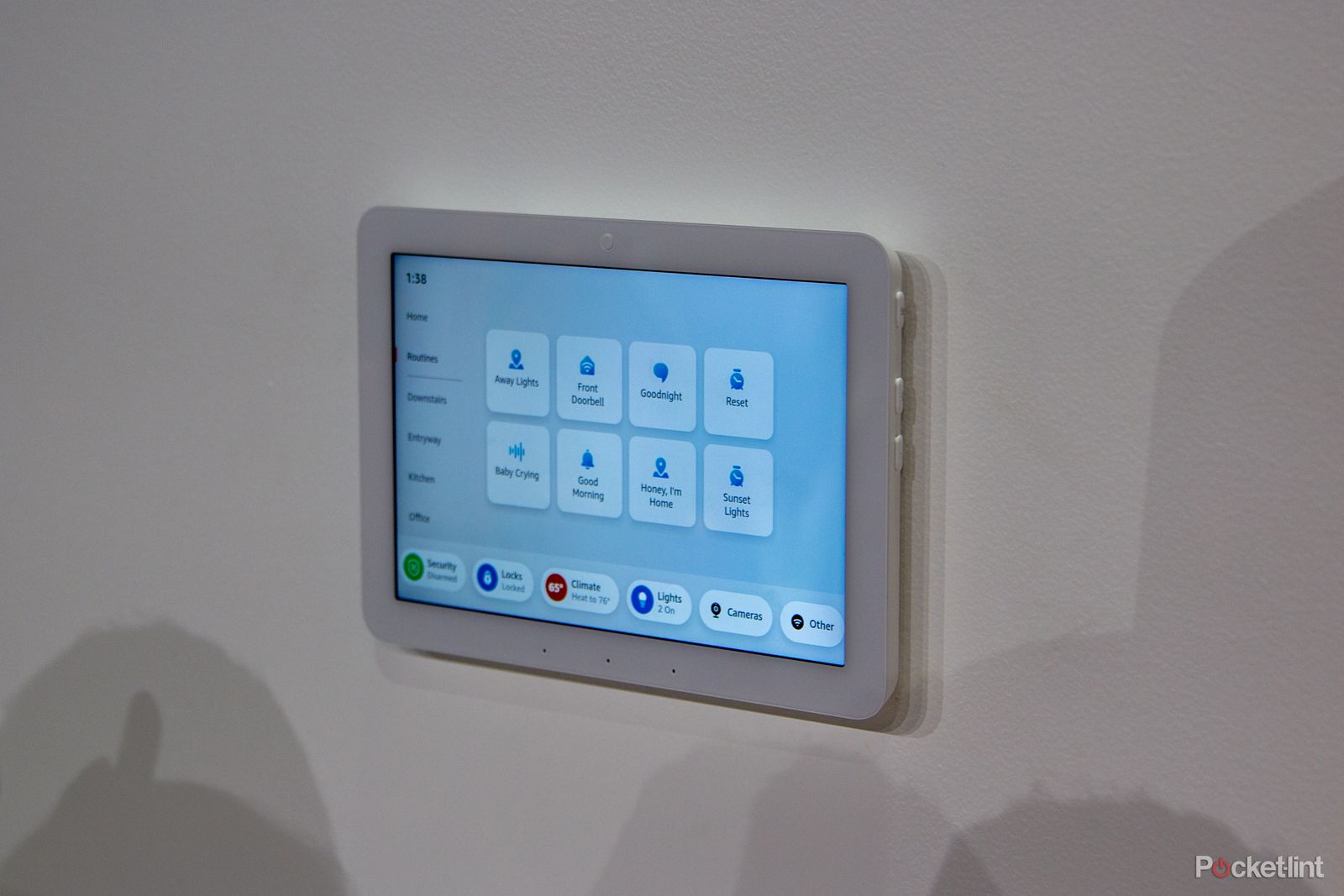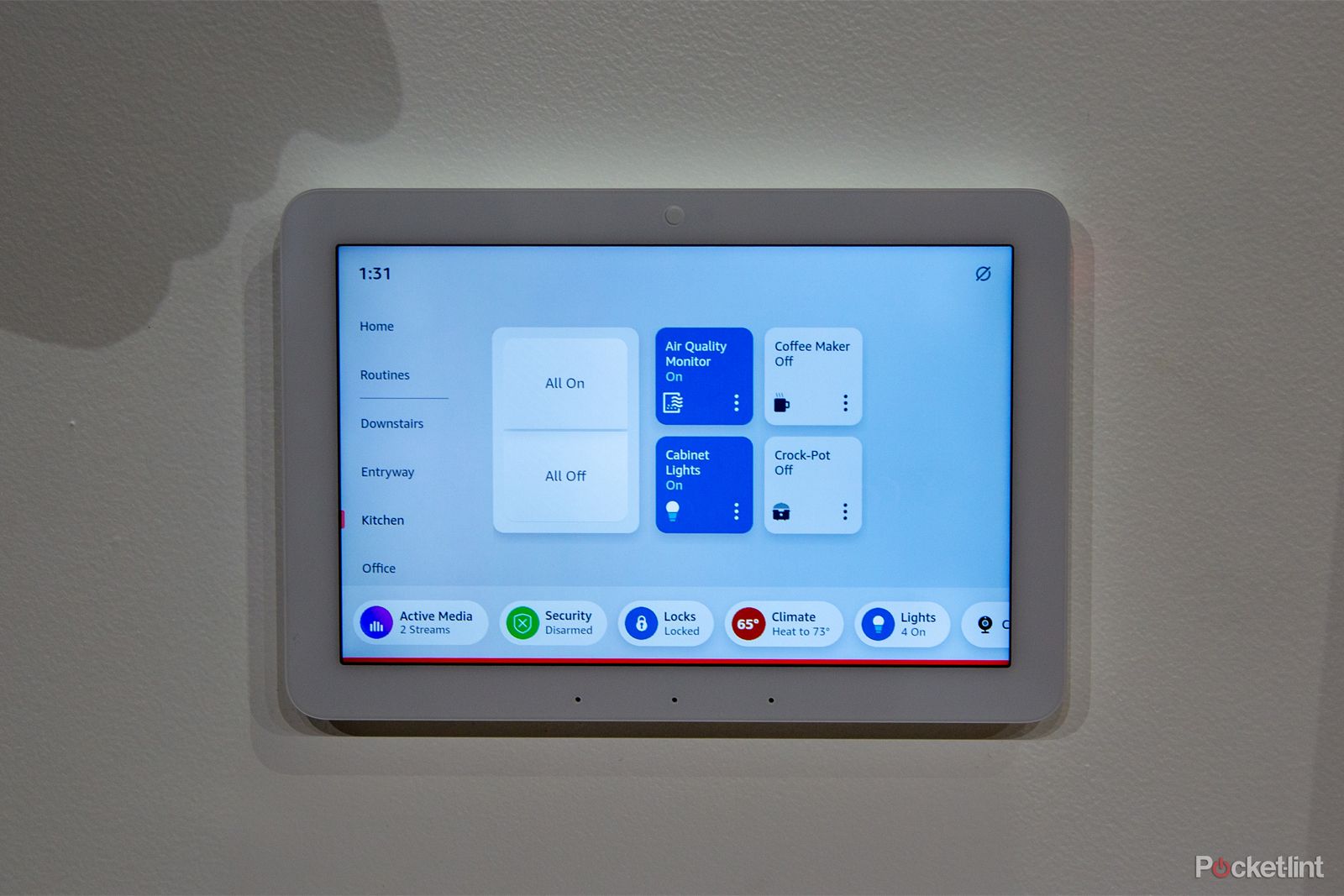Of all the devices that Amazon announced at its September Devices and Services event, the Echo Hub is the most interesting. On one hand, this is an entirely new device designed for a single purpose, and on the other, it's a distillation of previous Echo offerings.
I got to spend some time with the new Echo Hub at the launch event at Amazon's HQ2 in Arlington, Virginia - and I'm excited about what the Echo Hub can offer.
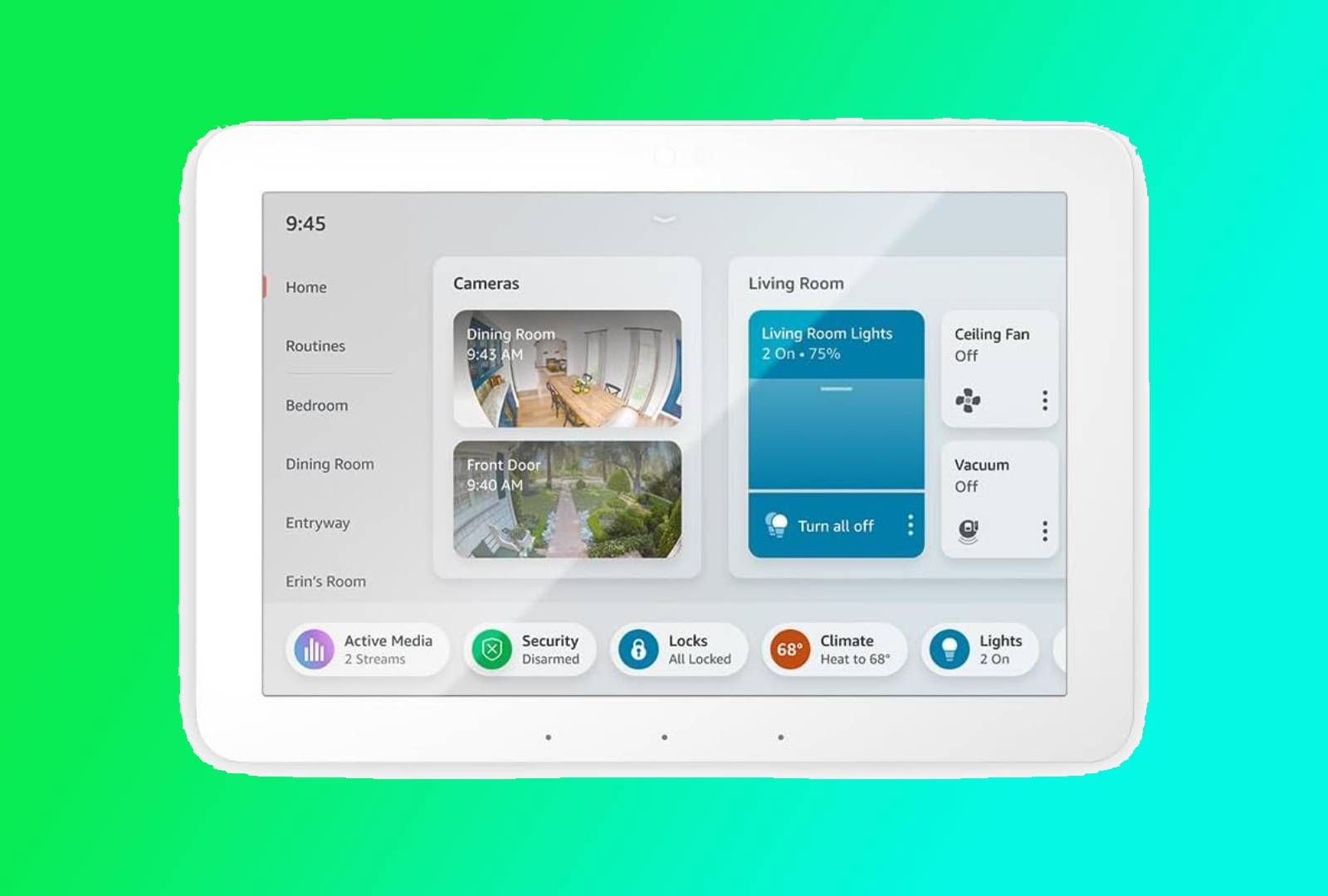
Amazon Echo Hub
The Amazon Echo Hub is a device dedicated to smart home control. Powered by Alexa, it's designed to give you a UI specifically for that task, making touch control easier and tying your smart home together.
Design and build
There's not a lot to the design of the Echo Hub. It's a slim device, just 15mm thick and measuring 202mm along the top and 137mm down the side. It looks like a white tablet with an 8-inch display, and it's designed to be wall-mounted, with the wall mounting kit in the box. There's the option for a desk stand if you'd rather have it sitting on a surface, but I expect that the option to mount it seamlessly will be more popular.
It will need a power cable, so for those wall mounting it, you'll have to figure out how to hide that cable for the best finish, but it also supports power over Ethernet, which potentially means you can power and connect the Echo Hub with one cable with a little forward planning. I'll need a compatible USB-C converter to make this happen.
Otherwise, the face of the Echo Hub has an IR sensor towards the top, which is designed to detect proximity, so the Echo Hub will know when you're in the room while also opening up possibilities for Adaptive Content in the future - a feature that's on the new Echo Show 8 which will change the size of what's displayed based on your proximity to the device.
There are three microphones arrayed across the front of the Echo Hub, while there is a pair of speakers at the top - although these aren't designed for music playback. Unlike the Echo Show, which is designed as an entertainment device, the Echo Hub's speakers are mostly there so that Alexa can reply to you when using voice.
On the right-hand side of the Echo Hub are a couple of controls: there's volume, as well as the mute button that will shut-off Alexa so you can ensure your privacy.
That's about all there is to the design: it's supposed to be a minimalist device, and my first impression was that it was smaller than I expected. This isn't going to take up a lot of wall space. Instead, it will be a clever interaction point, letting you control your smart home easily with an emphasis on touch.
Display and the new user interface
One of the things that excites me about the Echo Hub is that it's designed for one job - controlling your smart home. It's not going to be playing music, serving up recipes or anything else. Well, with Alexa on board, there's no telling what else it might be able to do, but I wasn't able to fully test the full range of possibilities during my hands-on time.
The display has a 1280 x 800-pixel resolution. The interface is designed with widgets and icons that are large enough for the resolution. Importantly, it's now focused around your smart home devices, so it's better organised than previous smart home elements on Echo Show.
There's a home screen that will house widgets to give you instant access to particular features, perhaps controls for the room you are in or your favourite devices, with a full widget gallery available for you. Ranging down the left-hand side of the screen will be access to your Routines and rooms so you can quickly take action with a couple of taps. Across the bottom is a run of icons that act as a quick snapshot of devices so you can quickly lock all the doors, turn off all the lights or activate your security, for example.
In the future, Echo Hub will also support the new Map View feature. This innovative feature will allow you to map the room using your smartphone (although only certain iPhone Pro models are supported). You can then place your smart home devices in that room, which is a realistic layout of the actual room. It should make management a lot easier, as rather than just having a group of connected devices on a list, you will be able to see and interact with those in the actual room layout.
Echo Hub connectivity
I haven't had the chance to setup the Echo Hub, but one of the important things is that it's packed with connectivity. When you sign into Echo Hub, it will populate with all the devices you have already set up using the Alexa app. This will be familiar to anyone who has signed into Alexa on a device before because it's all there because Alexa underpins the whole experience.
What's interesting about the Echo Hub is that it's fully connected, too. I mentioned earlier that it supported Ethernet for getting it hooked into your home network, but there's also Wi-Fi, of course. Beyond that, the Echo Hub offers future and legacy connection protocols. You have Zigbee in place, Matter, Thread, BLE Mesh, as well as Amazon Sidewalk. That will mean that the Echo Hub can not only control devices you've linked to Alexa using a Skill, but it can also connect to and set up devices without a hub directly.
That will give you great diversity and plenty of options when it comes to building a smart home and accommodating new and old devices. Exactly what that experience will be like compared to using the Alexa app, we can't yet say, but importantly, you have the foundations here for a really versatile system.
How is Echo Hub going to change the Alexa smart home?
Charlie French, director of smart home at Amazon, told me that Echo Hub was designed to be a touch experience first and foremost, and that's long been needed. Anyone who has used Echo Show to control smart home devices will know that it just takes too long to get around using touch and that voice is about the only way to do things.
The Alexa app is also frustrating at times and a little too slow when it comes to controlling some smart home features, and the Echo Hub should get around that problem. So far, I've only seen the Echo Hub in a demo situation. Most of the interface looked fluid enough, but there were also times when some of the transitions between pages were a little slow or the widgets didn't instantly populate with information. I'm hoping that this just comes down to the early stages of this device's life, and it's not because there's not enough power from the MediaTek MT 8169 A that drives it. Time and a full review will tell.
Some elements of the Echo Hub look really slick. Multiview cameras is one such aspect. This will allow you to look at all your camera at the same time like an expensive security system. While the Echo Hub will support a range of cameras (as Alexa already supports the likes of Arlo, for example), Multiview is currently only available for Ring cameras. Hopefully, there's expanded support in the future, but this is great news for anyone with a Ring system.
That also applies to those who have a Ring security system, with the Echo Hub able to give you a keypad to arm and disarm the system, which looks really sophisticated.
First impressions
What I like about the Echo Hub is that it comes in to fulfil those fantasies about having an expensive custom install system. How many times have you been watching a movie or seeing a store demo of a system where there's a control pad on the wall that does everything? Alexa has been solving smart home problems for many years, but with the Echo Hub, it looks like it's finally going to slot the last piece of the puzzle into place.
That's an exciting prospect because everything will just fall into place and work for anyone who has built a smart home around Alexa. I can see people opting for multiple Echo Hubs around their homes. At $180, building that fancy system isn't going to be out of reach. With Alexa about to get much more sophisticated, it's an exciting time for those of us with Alexa-based smart homes.

